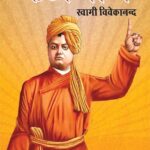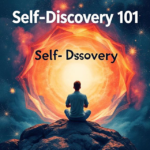India, a land of diverse cultures and traditions, has been plagued by one of the world’s most rigid and deep-rooted social hierarchies: the caste system. While the Indian Constitution guarantees equality to all citizens, caste-based discrimination continues to exist in both subtle and blatant forms. The pressing need for the annihilation of caste was first forcefully articulated by Dr. B.R. Ambedkar, whose ideas remain deeply relevant even today.
This blog explores why annihilating the caste system is not just a social necessity but also a moral and constitutional imperative for building a just, inclusive, and truly democratic India.
Historical Background of the Caste System in India
The caste system originated thousands of years ago, evolving from the four-fold varna system — Brahmins, Kshatriyas, Vaishyas, and Shudras. Over centuries, this transformed into a rigid, birth-based hierarchy with Dalits (formerly “untouchables”) outside the system, subjected to severe oppression.
The caste system dictated:
Occupation
Social interaction
Access to resources
Marriage alliances
Despite religious reform movements like Buddhism, Bhakti, and Sikhism challenging caste discrimination, it persisted.
Colonialism added new layers to caste, with the British using it for administrative convenience. After Independence, Article 15 and Article 17 of the Indian Constitution outlawed caste-based discrimination and untouchability. Yet, caste remains a social reality.
BR Ambedkar’s Vision: Annihilation of Caste
Dr. B.R. Ambedkar, a social reformer, scholar, and architect of the Indian Constitution, understood that mere legal reforms cannot end caste discrimination. His undelivered speech titled “Annihilation of Caste” (1936) became one of the most powerful manifestos against social injustice in Indian history.
Key points from Ambedkar’s message:
Caste is not just division of labor, but division of laborers.
Hinduism’s caste-based hierarchy is fundamentally against equality.
Reform of Hindu social order is essential to social justice.
He called for inter-caste marriage, education, and economic empowerment of Dalits and backward castes.
For Ambedkar, true liberty and fraternity were impossible without annihilating caste.
Present-Day Caste Realities in India
Despite constitutional safeguards and affirmative action, caste continues to influence:
Education (discrimination in schools and universities)
Employment (lack of representation in private sector)
Housing (segregated colonies in urban and rural areas)
Marriage (over 90% of marriages in India are still caste-endogamous)
Politics (vote banks and caste-based parties)
Social behavior (honor killings, manual scavenging, temple entry bans)
Caste-based violence against Dalits and other backward castes (OBCs) is still rampant. According to the National Crime Records Bureau:
Crimes against Scheduled Castes have increased steadily.
Dalit women are more vulnerable to sexual violence.
The digital age has only shifted caste bias online — where surnames and profiles still lead to discrimination.
The Psychological and Economic Cost of Caste
Caste does not just segregate; it dehumanizes. It imposes inferiority complexes in the oppressed and superiority illusions in the privileged. The mental trauma, loss of opportunities, and social exclusion perpetuate poverty and inequality.
Meritocracy is a myth in a society where systemic inequality exists.
Dalits and Adivasis often lack access to quality education, health, and capital.
Caste leads to intergenerational poverty and unemployment.
No nation can progress if a section of its population is deliberately held back. Social cohesion, economic growth, and national unity demand caste abolition.
Why Annihilation of Caste is a National Necessity
Here’s why India must actively work toward annihilation of caste:
A. To Uphold Constitutional Values
The Preamble promises justice, liberty, equality, and fraternity.
Article 15 prohibits caste-based discrimination.
Article 17 abolishes untouchability.
Yet, unless caste is annihilated in society, these values remain on paper.
B. For True Social Justice
Reservations alone cannot address caste-based injustices.
Social acceptance, equal dignity, and representation are crucial.
Without caste annihilation, Dalits and backward castes remain marginalized.
C. For Economic Development
Caste exclusion leads to waste of human capital.
Empowering all castes improves productivity, innovation, and entrepreneurship.
Equitable development is only possible with inclusive policies.
D. For National Unity
Caste-based fragmentation weakens national identity.
Caste riots, vote bank politics, and social unrest affect stability.
Only a caste-free society can create true unity in diversity.
The Role of Education, Media, and Civil Society
A. Education
Schools must promote equality, critical thinking, and respect for diversity.
Curriculum should include writings of Ambedkar, Periyar, Jyotiba Phule.
Anti-caste and human rights education must start early.
B. Media
Media must highlight caste issues without bias.
Representation of Dalits and backward castes in media houses is essential.
Films, web series, and documentaries can be powerful tools of change.
C. Civil Society
NGOs, activists, and student groups must build awareness.
Social campaigns promoting inter-caste friendships and marriages should be encouraged.
Tech platforms can be used to expose discrimination and mobilize reform.
The Role of Religion and Spiritual Movements
Many spiritual movements and reformers have historically challenged caste:
Buddha rejected caste and promoted compassion.
Bhakti saints like Kabir, Ravidas, and Tukaram advocated equality.
Sikhism denounced caste and served the marginalized.
Today, faith institutions must take a bold stand:
Open temples and sacred spaces to all castes.
Promote messages of unity and brotherhood.
Support social justice as a spiritual mission.
Can Inter-Caste Marriages Help Annihilate Caste?
Dr. Ambedkar emphasized inter-caste marriages as a powerful tool to break caste barriers. However, even today:
Inter-caste marriages are rare.
Many face family opposition, social boycott, or even honor killings.
The government’s Incentive Scheme for Inter-Caste Marriages is a good step, but more needs to be done:
Awareness campaigns to normalize such unions.
Legal protection for inter-caste couples.
Role models in media and public life can help shift mindsets.
Caste in Urban India: Myth of Modernity
Many believe caste is disappearing in urban areas — but the urban caste illusion hides discrimination:
Hiring bias based on surname or college
Rental housing discrimination
Lack of representation in corporate leadership
Online harassment of Dalits on social media
Technology must be used not to hide caste, but to eliminate its influence.
The Way Forward: A Caste-Free India
The road to annihilation of caste is long, but not impossible. Here’s what can help:
Strong legal action against caste-based crimes.
Educational and economic empowerment of marginalized groups.
Inclusive policy-making with Dalit representation.
Inter-caste interaction, harmony, and celebration of diversity.
Political will, media reform, and civil society activism.
Caste may be deep-rooted, but resistance is growing — from Dalit movements to youth protests, from anti-caste literature to art and culture that question the status quo.
Final Thoughts
The annihilation of caste is not just an idealistic goal — it is the need of the hour. India’s greatness cannot be measured by its GDP or digital growth alone, but by the dignity and equality it offers to its citizens. The future of Indian democracy, peace, and progress depends on dismantling the structures of caste that divide and degrade.
As Ambedkar said, “We must remove this contradiction at the earliest possible moment or else those who suffer from inequality will blow up the structure of political democracy.”
Let us not wait for that moment. Let us act now — for a caste-free, equal, and humane India.
Related posts:
 Discover Your Destiny: Unleash Your True Potential
Discover Your Destiny: Unleash Your True Potential
 Karma Yoga: The Power of Action and the Path to Success
Karma Yoga: The Power of Action and the Path to Success
 Rajyog: The Path to Inner Power and Peace
Rajyog: The Path to Inner Power and Peace
 Bhakti Yoga: The Path of Devotion and Divine Love
Bhakti Yoga: The Path of Devotion and Divine Love
 Breaking India: Unveiling Forces Fragmenting the Nation
Breaking India: Unveiling Forces Fragmenting the Nation
 Self-Discovery 101: How to Unlock Your True Potential
Self-Discovery 101: How to Unlock Your True Potential
